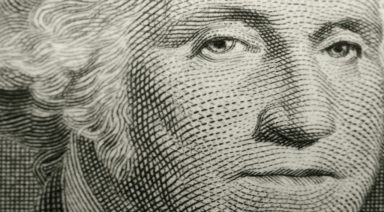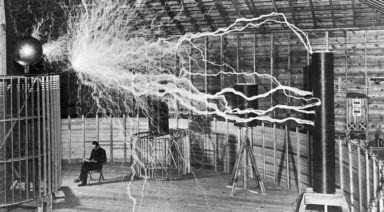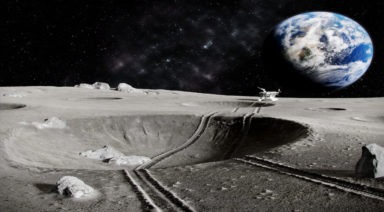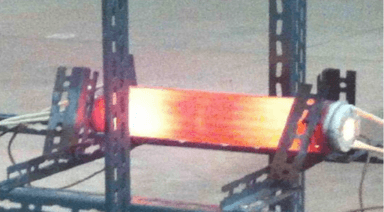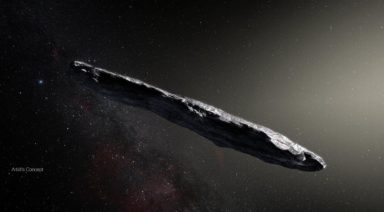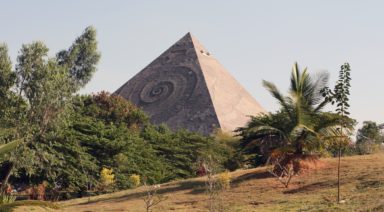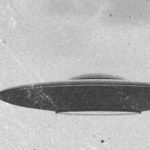The CIA’s In-Q-Tel is Investing in Startups That Can Predict the Future

We tend to unknowingly or neglectfully expose a lot of our personal data on the internet and often times it’s not our fault. Social networks and digital applications, marketed as a utility or source of entertainment, can also be used for mining data and giving corporations incredible insight into our personal lives. That data is then analyzed and stored to develop a profile that decides the best way to target us with advertisements.
That’s not so surprising anymore; we’ve become keen on recognizing these marketing techniques and come to expect them. It becomes unsettling however when the CIA has a role in this game and seeds start-ups to develop technology to mine data for its clandestine agenda. This is also nothing new, but not many people are aware of the CIA’s venture capital arm, In-Q-Tel, which has backed some of Silicon Valley’s most prevalent advents, influencing widely used Google apps and possibly even Facebook. So, what is In-Q-Tel, and should we be concerned?
In-Q-Tel’s Keyhole Becomes Google Earth
In the early 2000s, the development of Google Earth made geospatial technology an exciting prospect in the tech world. Unsurprisingly, this technology was controversial and banned in some countries due to national security concerns and privacy issues. What is also unsurprising is that it was originally developed by a startup that was funded by In-Q-Tel, called Keyhole EarthViewer. The National Geospatial-Intelligence Agency, or NGA, was cultivated out of this new technology as a parallel branch to the NSA that focuses on exploiting and analyzing geographical information and activity.
In-Q-Tel’s budget started off at $28 million in its first year and has been somewhat hazy ever since. After Sept. 11, 2001, the government’s black budget for intelligence agencies increased dramatically, with the CIA now receiving about $14.7 billion. In-Q-Tel can access this money without having to fully disclose its spending. It also doesn’t participate in requests for comments or interviews with the media.
In-Q-Tel, since its inception in 1999, continues to fund start-ups in the tech world ranging from skincare lines to novel drone technology, but much of its investment goes into data mining. These tools collect, store, and analyze data to create profiles on individuals, groups, and events that are of interest to the CIA, law enforcement, and corporations. Often these programs mine platforms like Twitter, Facebook, and Instagram to monitor activist protests, influential “decision-makers,” and trends. One day these algorithms surveil our personal data and activity, and the next they’re being sold to corporations for advertising.

In-Q-Tel ‘s Keyhole, Inc developed Google Earth
Who is in In-Q-Tel?
In-Q-Tel is headed by Gilman Louie, a former video game designer, turned venture capitalist. Some have made note of Louie’s connections with board members of the venture capital firms that gave Facebook the funding to become the social media juggernaut it is today. One of its connections is to James Breyer, a partner and board member of Accel, the company that invested $12.7 million in Facebook’s Series A funding.
Louie and Breyer sat together on the board of military defense contractors, BBN, known for essentially helping to create email and the internet. Facebook’s second round of funding came from a company called Greylock Venture Capital, headed by Howard Cox, who also sat on In-Q-Tel’s board.
Another interesting connection that has been made with Louie is his role with Niantic, the mobile gaming company that created Pokèmon Go. Louie was added to the board of the company for his strategic insight into both gaming and venture capital investment. The augmented reality technology for Pokèmon Go was also a product of Keyhole, Inc., the In-Q-Tel funded start-up that became Google Earth.
Users of the game are required to allow the program to access personal data ranging from geolocation services to camera access, and it even has the capability to remotely read, modify, or delete files on a user’s phone. The program can track where users are, where they’ve been, what they look like, and multitudes of personal information that could be used to create profiles and spy on individuals. This begs the question; is this a beta test for a larger CIA-sponsored program?
What is In-Q-Tel Investing In?
While this may seem overly paranoid, it falls in line with other In-Q-Tel tech investments. Dataminr is one such blatantly named startup that uses Twitter data to spot trends that can be used to benefit law enforcement, ostensibly monitoring for terrorist threats. But what else can this data be used for and what are the ethical concerns with the profiles that are being built with this information?
Edward Snowden’s exposé showed the NSA’s ability to use metadata to paint a very intrusive image of innocent civilians. This technology could be easily manipulated with a deluge of false tweets sent to intentionally cause panic, considering the tweets aren’t verified. An attack of this nature could be carried out by hackers or even the government itself in a false flag operation.
Other companies In-Q-Tel has invested in that monitor and analyze social media data include GeoFeedia, Pathar, and TransVoyant. But one of the more invasive projects in this space, a program named Palantir, is as unsettling in its scope as its name infers. Palantír, in Lord of the Rings, is an omniscient crystal ball that can see anything, anywhere, including into the past and future.
The company was created by Peter Thiel, founder of PayPal and former board member of Facebook with other In-Q-Tel venture capitalists. Palantir created a system, much like the premise of the movie Minority Report, where law enforcement can predict crime before it happens. It has been touted for its success in military applications and is being implemented in law enforcement with “predictive policing” efforts. The prescience of Philip K. Dick’s dystopian police state is uncanny. Some believe this is already a factor in the recent disparities in police shootings and as an instigating force in growing police militarization.

In-Q-Tel invests in predictive policing tech
In-Q-Tel’s business model made it highly successful in a number of ways, and it has essentially become an indicator of success in the venture capital world, with every $1 of investment from In-Q-Tel drawing up to $15 from private investors. So, if In-Q-Tel decides it likes a startup’s idea, its investment will draw significant attention from other venture capitalists, letting the private sector fund technology that benefits the CIA’s clandestine programs.
In-Q-Tel also only answers to the CIA instead of traditional investors, despite the CIA’s funding coming from taxpayer dollars. It is considered a non-profit that is unconcerned with monetary earnings, but rather tech capital – again easy to do when you don’t have to answer to investors. A contract with the CIA is now like gold for tech startups looking for seed funding, given the success, influence, and amount of money In-Q-Tel has, but where should we draw the line for government access and transparency? If this technology is being used to spy on us, perpetuate the militarization of law enforcement, and potentially create a more aggressive police state, shouldn’t we have a say in these things?
HAARP; A U.S. Conspiracy Theory Magnet

In 1993, The US Air Force began construction on a $290 million project that would enable the government’s foremost atmospheric researchers to study the ionosphere — the top layer of the Earth’s atmosphere. The research center, now run by the University of Alaska, Fairbanks, is called the High-Frequency Active Auroral Research Program, or HAARP, and is located in the frozen wilderness of Gakona, Alaska. For a number of reasons, HAARP’s activities have drawn the attention of citizens who are suspicious of the organization’s practices.
Over the years, HAARP has been officially credited with conducting useful and successful research, but because of its highly complex work, officials claim its purpose has been largely misunderstood by detractors. For this reason, it has been ground zero for criticism since its inception.
Situated in the remote wilderness of an already low-population state — purportedly to promote secrecy — HAARP features 360 radio transmitters, 180 antennas, and 5 powerful generators that create geometric patterns in every direction when turned on. The antennas, each a foot thick and stretching 72 feet into the sky, continue to raise eyebrows.
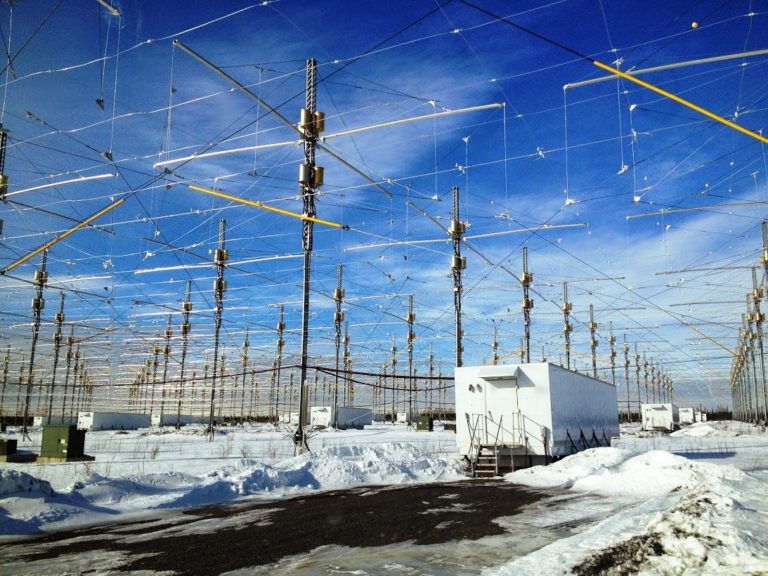
A section of the HAARP antenna field.
Shortly after the facility opened, the public began reporting strange phenomena — not only in the region, but around the world. Activists challenged HAARP’s activities, vocally questioning what the organization was really up to. While the government continues to deny any connection with changes in weather, frequencies of earthquakes, and chemtrails in the skies, it has made deliberate efforts to quell suspicions about the nature of its operations. Yet these are not nearly enough to quiet HAARP’s notable detractors, including former Venezuelan President, Hugo Chavez and former Minnesota Governor, Jesse Ventura.
Ventura questioned whether the government was using HAARP to manipulate the weather or overwhelm citizens with mind-controlling radio waves. While the Air Force acknowledged that Ventura had made an official request to visit the research station, he and his crew nevertheless were denied access.




